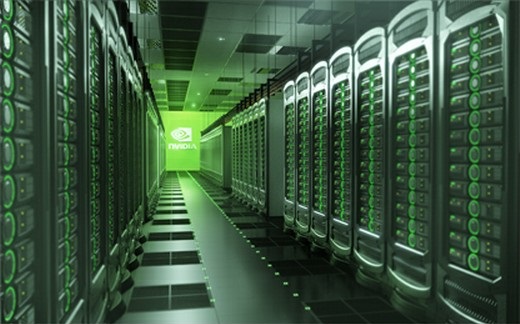Nvidia Prospers As Games, Data Centre Drives Growth

Strong demand for GPUs in gaming PCs and the data centre has driven hugely impressive growth
Nvidia has pleased Wall Street with strong quarterly results, including over 800 percent rise in profits.
The Santa Clara, California-based graphics chip specialist was helped by strong demand for its new GPUs in both the gaming and data centre industries.
Financial Results
Nvidia has also branched out into new areas including deep learning, AI and even the automotive sector, and the company is reaping the rewards.
For the second quarter ending 31 July, it posted a net profit up a staggering 873 percent at $253m (£195m), compared to just $26m (£20m) in the same year ago period.
There was equally good news on the revenue side, as sale rose 24 percent to $1.4bn (£1.1bn) from $1.153bn (£889m).
Of course Nvidia made its name in the gaming sector, and it is worth noting that its gaming division still accounts for more than half of the its total revenue. But the firm has recently diversified into other areas including the data centre, professional virtualisation, automotive, AI and deep learning segments.
 It has been a busy quarter for Nvidia. It released four new offerings for its Pascal family of gaming GPUs. The firm also released its first ever VR computer game, and Ansel, an in-game 360 degree capture tool, which enables gamers to take and share screenshots of their favourite in-game moments.
It has been a busy quarter for Nvidia. It released four new offerings for its Pascal family of gaming GPUs. The firm also released its first ever VR computer game, and Ansel, an in-game 360 degree capture tool, which enables gamers to take and share screenshots of their favourite in-game moments.
On the virtualisation side it released the Quadro P6000 to power advanced workstations, and on the data centre side has released the Tesla M10 GPU accelerator for PCI-Express-based servers.
“Strong demand for our new Pascal-generation GPUs and surging interest in deep learning drove record results,” said Jen-Hsun Huang, co-founder and CEO. “Our strategy to focus on creating the future where graphics, computer vision and artificial intelligence converge is fuelling growth across our specialised platforms – gaming, pro visualisation, data centre and automotive.”
“We are more excited than ever about the impact of deep learning and AI, which will touch every industry and market,” said Huang. “We have made significant investments over the past five years to evolve our entire GPU computing stack for deep learning. Now, we are well positioned to partner with researchers and developers all over the world to democratise this powerful technology and invent its future.”
New Areas
Looking ahead to the third quarter, the firm expects to report revenues of approximately $1.68bn.
Earlier this year the firm bolstered its HPC (high-performance computing) credentials with the release of the Nvidia DGX-1, which it claimed was the world’s first deep learning supercomputer.
The first is also pushing hard in the automotive sector, and last year it teamed up with IBM and Mellanox for a research centre in France to push research and adoption of Big Data and HPC technologies based on OpenPOWER
Are you a security pro? Try our quiz!